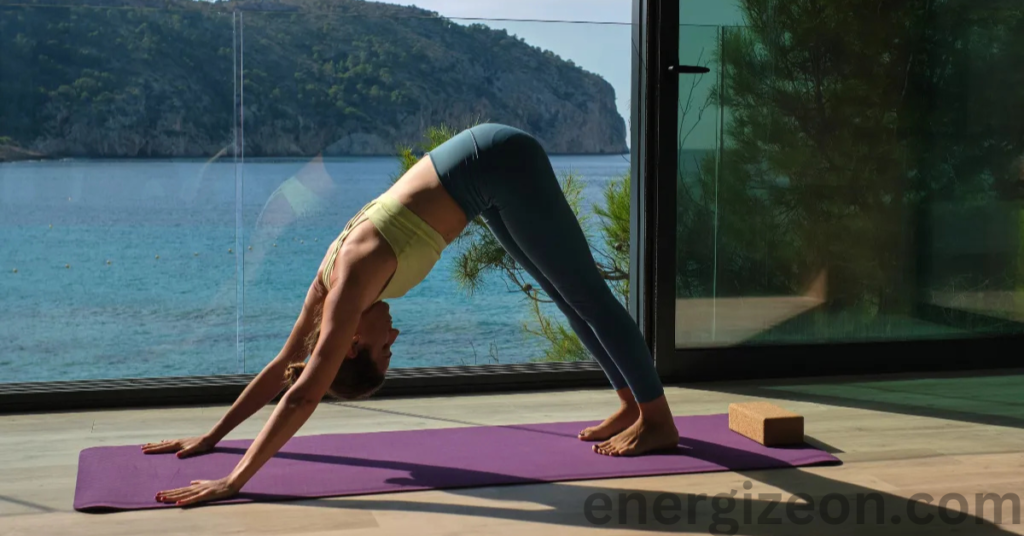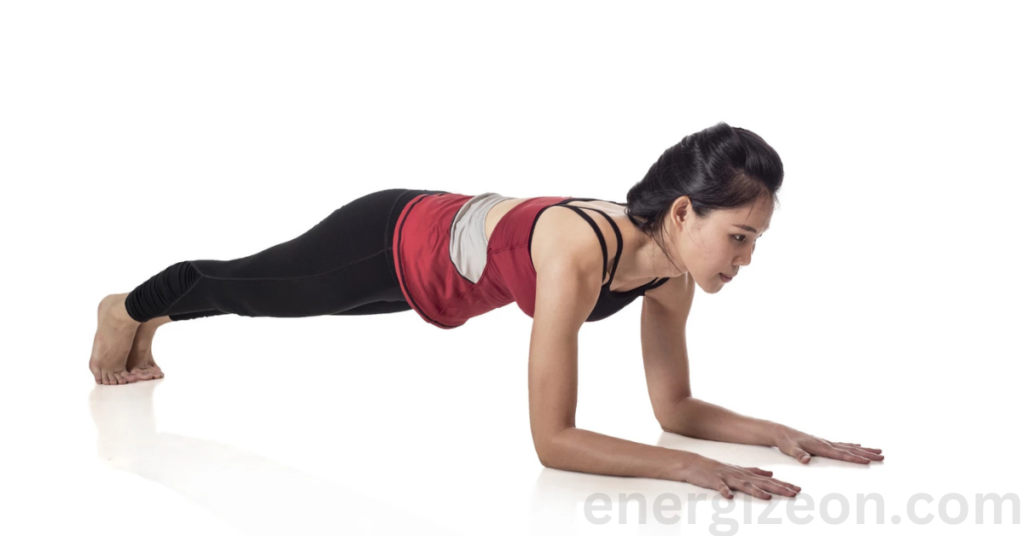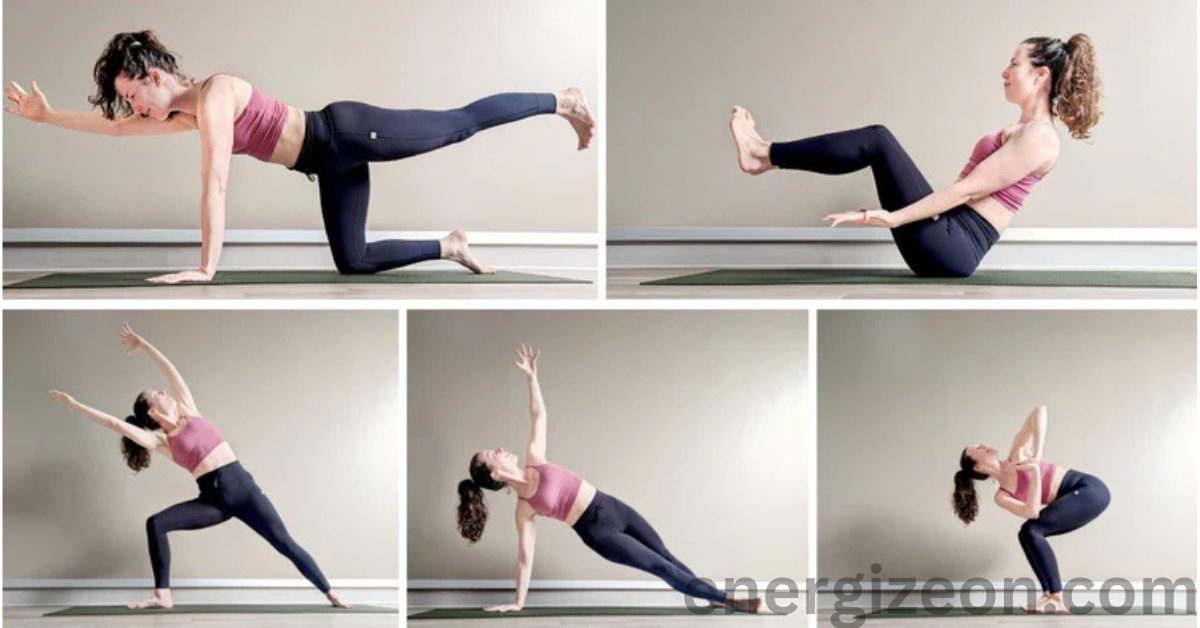Yoga is not simply exercise, it is a comprehensive discipline of exercise on the body level linked to spiritual training. The problem is that most people, beginners in yoga or experienced practitioners, never use a solid workout schedule that would make their body stronger or help them find inner harmony. Because even basic movements, breathing exercises, and focused positioning, you feel strong and energized after every session.
The Benefits of a Yoga Routine
However, having established what yoga is, let us now look at the many benefits that would help when engaging in a daily yoga routine.
Strength Building: This means that by doing yoga you are exercising all your large muscles and even the small ones in the body. compared to weight training, Yoga focuses on functional strength that has the added advantage of enhancing your flexibility, and mobility, unlike the endurance aspect of it.
Mental Clarity: It’s not just about creating different postures. Yoga is also said to incorporate special kinds of breathing exercises (pranayama) which may enable one to rid the mind of stressful thoughts and help in focusing more on the object at hand. You can take a conscious walk after a hard day’s work or in the morning with your mind made up and clear.
Positivity & Energy: Yoga being practiced as a routine has been found to improve the mood of a person and also boost his energy levels. They also assist in ventilating negative feelings and replace them with positive feelings such as joy, peace, and gratitude. You don’t have to look far for ways to become more attentive to your body and your mind; exercising with mindful intentions can help you have a positive outlook on life.
The Essential Elements of a Yoga Routine
A balanced yoga routine typically includes several key components:
Warm-Up: This stretches your muscles slowly and warms them in readiness for advanced stretching and even intense poses.
Strength and Flexibility Poses: Strengthen your muscles and increase flexibility as you try out postures such as Warrior II, Downward Facing Dog, and Plank Posture.
Breathing Exercises: Regulate your breath and emerge to another level of focus and sequence and following.
Cool-Down: You will be required to sedate your nerves and your muscles following the physical exercise.

A Simple Yet Powerful Yoga Routine
Now, it’s time to describe to you the brief, yet productive yoga practice that you can try in everyday life. The music selection for this sequence will be strength music and positive affirmation music so you’ll feel strong afterwards.
Start with Breathing (Pranayama)
Duration: 2-3 minutes
Start with your back straight and the feet flat on the ground, the arms folded across the legs. First, return your awareness to your breathing and just let your eyes open. Breathe in through your nose, and take your time doing it, ensuring that your lungs are fully inflated, then breathe out through your mouth. Before you inhale, you should clear your mind and learn to focus on the present moment. These will encourage deep breathing and help set the correct positive and focused tune for practice.
Cat-Cow Pose (Marjaryasana-Bitilasana)
Duration: 1-2 minutes
Get down on your desk and put your hands below your shoulders, and your knees below your hips assuming a Superman position. Inhale you raise your arms while at the same time bending your spine in an arc (Cow pose). Then breathe out, arch your spine, and pull your chin toward your chest – Cat Pose). Continue this motion for about 1-2 minutes. This gentle flow will help activate your spine, mobilize your back, and strengthen your awareness of breath.
Downward-Facing Dog (Adho Mukha Svanasana)
Duration: 30-60 seconds
Starting from touching the floor with the top of the head, buttocks, and the ball of the foot, flip the body to rest on the forearm and the back of the leg while the hips are raised toward the ceiling coming up to the ‘V’ position. Stand with your arms stretched out in front of the body to a level when the hands form a right angle and your legs should be shoulder-width apart.
While using your arms, step down with your heels to the ground. This pose stretches the back side of the legs as well as the back while strengthening the arms and shoulders. Wait for 30 seconds with your eyes closed, paying attention to your breath.
Warrior II (Virabhadrasana II)
Duration: 1 minute per side
For this exercise, stand with your head, neck and shoulders upright and your legs somewhat wider than shoulder-width apart. Rotate your right foot away from you at a 90-degree angle and flex your right knee to ensure the knee cap aligns with your ankle line. Place your hands by your sides, beyond your shoulders, your palms should be facing down and your fingers stretched.
Look over your right hand, slightly expanding your chest, moving your shoulders back. This stance is useful in strengthening the legs and the tummy and stretching the hips and the chest. Perform a minute exercise, and then change the sides.
Plank Pose (Phalakasana)
Duration: 30-60 seconds
After the Downward-Facing Dog position, you have to switch your body weight forward and assume a straight line from your head to the soles of your feet. Your hands should be placed about twice the length of your shoulders from each other and your feet should be planted about as wide as a hip’s width.
Bend forward from the hips, do not let your hips droop, and keep them from swaying up too. This technique engages the muscles of the body and at large the muscles of the abdomen, arms, and shoulders. Wait for 30-60 seconds regarding your breathing.

Low Lunge (Anjaneyasana)
Duration: 30-60 seconds per side
From the plank, slide your right foot in between your hands; place your left knee down flat on the floor. With your chest up, swing your arms up above your head. This pose also provides stretching on the hip flexors since most people sit down most of the morning. It also helps to build up leg muscles and increases balance. Perform for 30 seconds and then swap to the other side of the body.
Tree Pose (Vrksasana)
Duration: 30-60 seconds per side
Stand upright, but feet must be parallel to each other. For this, you want to transfer much of your weight onto your left leg as you take the sole of your right foot to the inner thigh, calf, or ankle but not the knee. Clasp your hands in a prayer position at the level of your chest or keep your arms fully stretched high for enhanced workout. Balancing pose aligns and enriches the posture it is also good for the body especially the legs and the stomach muscles. Stay like that for 30 to 60 minutes then change sides.
Seated Forward Fold (Paschimottanasana)
Duration: 1-2 minutes
Stand with your feet shoulder-width apart and then sit down on your legs, and your legs should be straight, on the floor in front of you. To do the pose – breathe in and stretch your arms up to the ceiling to elongate the spine, while upon exhalation, bend forward at the hips to reach towards the toes or shin.
If that is impossible, it is also quite alright to sit on your heels and ensure that your spine is elongated while you deepen the stretch. It helps to stabilize energy, relieves tension in the mind, lengthens the hamstrings, and promotes tissue pliability in the back. Hold for 1-2 minutes.
Bridge Pose (Setu Bandhasana)
Duration: 1 minute
The first position is lying on your back with knees flexed and feet flat on the floor, wider than shoulder width apart. Whilst placing your feet firmly on the ground move your hips vertically upwards towards the ceiling and your arms must be straight down the side of your body with your palms facing the floor. It stretches chest and hip flexor and improves the strength of your glutes, hamstrings, and lower back muscles. Wait for one minute, then, control your body to return back to the floor.
Child’s Pose (Balasana)
Duration: 2-3 minutes
Come out from your practice of the relaxing pose known as the Child’s Pose. Kneel on your knees, collapse forward onto your folded legs with your forech head touching the floor, and put out your hands with palms down and apart. This gentle stretch relieves tension buildup in the back, shoulders, and neck muscles and deep breathing soothes the nervous system. Sit here for 2-3 minutes with your eyes closed, and try to take deep breaths to calm your muscles down.
Conclusion
The following yoga exercises are a powerful workout for both your body and your spirit. No matter if you need strength or flexibility, or if you simply need help changing your attitude towards life these poses will leave you feeling fresh and well-rounded.
Bear in mind that yoga is never about the outcome or achievement, or getting things right. It is more of the process, of how you relate to your breath and the overall flowing movements of your body. Always train, ignoring the signals from your body, and above all, have fun.
What usually provides a consistent schedule of yoga exercises is that you are not harmed physically but also mentally and emotionally. Allow yoga to be the strength, comfort, and optimism you need as you wake up to a new day.
What are the benefits of practicing yoga?
Yoga improves flexibility, builds strength, reduces stress, enhances mental clarity, and promotes overall well-being.
How often should I practice yoga?
For best results, practice yoga at least 3-4 times a week. Even daily sessions of 15-30 minutes can bring significant benefits.
Do I need to be flexible to start yoga?
No, flexibility is not required to start yoga. Yoga helps improve flexibility over time, regardless of your current level.


1 thought on “Unleash Positive Power: A Yoga Routine for Strength and Clarity”